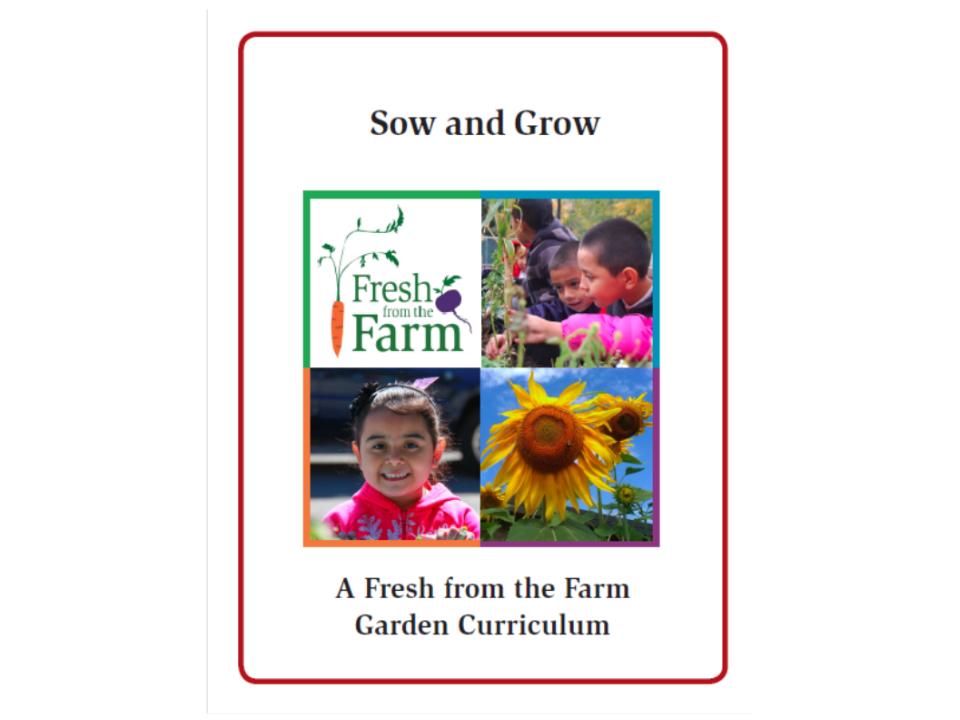Sow and Grow is an elementary curriculum designed to educate children about various plants and their parts, how plants grow, where our food comes from, and what is required to grow a healthy plant. Sow and Grow further covers topics such as School Gardens, plant life cycles, crop harvesting and seasonality, weeds, bugs and insects, the importance of soil, and how to compost.
The Nutrition component was developed to correlate with the Sow and Grow curriculum. Next Generation Science Standards, Language Arts Standards, and Health standards for Illinois were evaluated for learning competencies. Each correlating nutrition lesson of Sow and Grow is comprised of objectives and goals. Each lesson is assigned Common Core Standards. The complete list of Common Core Standards that the nutrition lessons will achieve can be found below.
Main Common Core Standards
English Language Arts Standards (ELAS)
Reading Standards for Informational Text: (RI)
- 1.1- 6.1: Ask and answer questions about key details in a text.
- 1.2- 6.2: Identify the main topic and retell key details of a text.
- 1.3- 6.3: Describe the connection between two individuals, events, ideas, or pieces of information in a text.
- 1.7- 6.7: Use the illustrations and details in a text to describe its key ideas.
Reading Standards: Foundational Skills: (RF)
- 1.4- 6.4: Read with sufficient accuracy and fluency to support comprehension.
Writing Standards: (W)
- 1.2-6.2: Write informative/explanatory texts to examine a topic and convey ideas and information clearly.
Speaking and Listening Standards: (SL)
- 1.4- 6.4: Report on a topic or text, or present an opinion.
- 1.1- 6.1: Participate in collaborative conversations with diverse partners about topics and texts with peers and adults in small and larger groups.
Language Standards: (L)
- 1.1-6.1: Demonstrate command of the conventions of standard English grammar and usage when writing or speaking.
Next Generation Science Standards: (NGSS)
- 4-LS1-2: Use a model to describe that animals receive different types of information through their senses, process the information in their brain, and respond to the information in different ways.
- MS-LS1-5: Construct a scientific explanation based on evidence for how environmental and genetic factors influence the growth of organisms.
- 3-LS3-2: Use evidence to support the explanation that traits can be influenced by the environment.
- 2-PS1-1: Plan and conduct an investigation to describe and classify different kinds of materials by their observable properties.
- 5-PS1-3: Make observations and measurements to identify materials based on their properties.
- 5-PS3-1: Use models to describe that energy in animals’ food (used for body repair, growth, motion, and to maintain body warmth) was once energy from the sun.
- MS-ESS3-3: Apply scientific principles to design a method for monitoring and minimizing a human impact on the environment.
- K-2-ETS1-1: Ask questions, make observations, and gather information about a situation people want to change to define a simple problem that can be solved through the development of a new or improved object or tool.
- K-2-ETS1-3: Analyze data from tests of two objects designed to solve the same problem to compare the strengths and weaknesses of how each performs.
- 3-5-ETS1-2: Generate and compare multiple possible solutions to a problem based on how well each is likely to meet the criteria and constraints of the problem.
- MS-ETS1-1: Define the criteria and constraints of a design problem with sufficient precision to ensure a successful solution, taking into account relevant scientific principles and potential impacts on people and the natural environment that may limit possible solutions.
- MS-ETS1-2: Evaluate competing design solutions using a systematic process to determine how well they meet the criteria and constraints of the problem.
CDC National Health Education Standards (NHES) Standard 1
Pre-K-Grade 2
- 1.2.1: Identify that healthy behaviors impact personal health.
Grades 3-5
- 1.5.1: Describe the relationship between healthy behaviors and personal health.
- 1.5.3: Describe ways in which safe and healthy school and community environments can promote personal health.
Grades 6-8
- 1.8.1: Analyze the relationship between healthy behaviors and personal health.
- 1.8.3: Analyze how the environment affects personal health.
Created by Matthew Czajka, MBA/RD student at Dominican University, intern at Seven Generations Ahead and the Illinois Farm to School Network.

